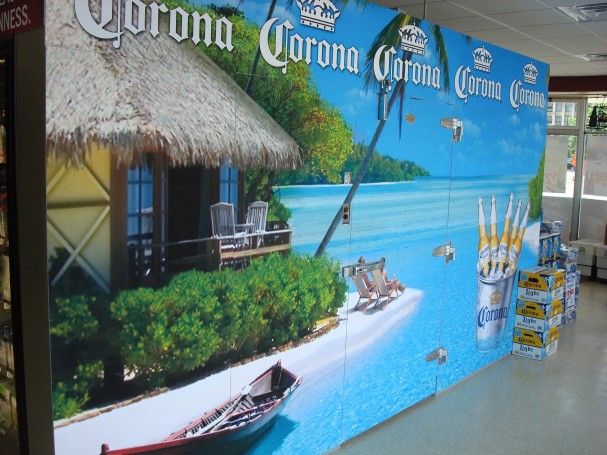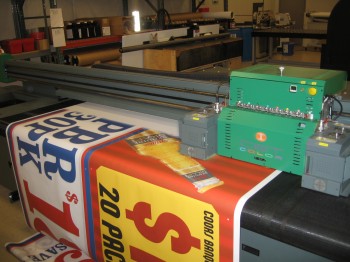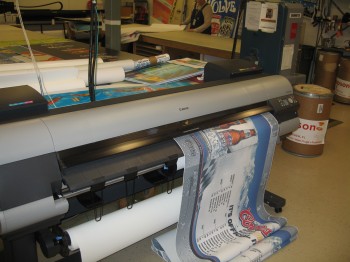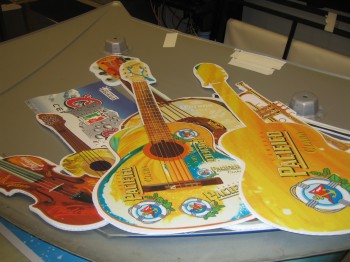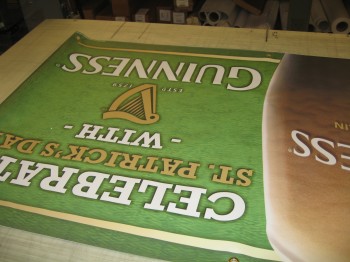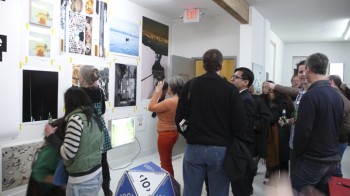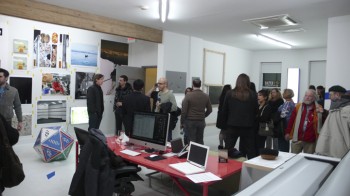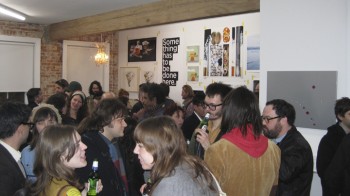As everyone in the beverage distribution market knows, point of sale sign placement is a crucial component of sales. Though it can’t always be quantified there’s no doubt that a restaurant, bar or c-store account that’s happy with their signage is more than happy to place more orders and try different brands offered by the distributor.
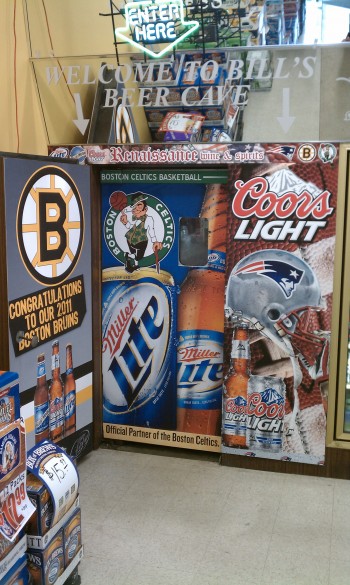
An excellent case in point of this maxim in operation is Atlas Distributing Inc., and its print shop headed by graphic design manager Brent Lee. Lee says the two most important keys to ensuring high-visibility point of sale placement for Atlas Distributing’s brands – primarily MillerCoors, Samuel Adams, Corona and Heineken – is quick turnaround and colorful, photo-quality graphics.
“Turnaround time is easily the number one factor for us. One of our competitors here promises a turnaround time of two weeks for all their signs. We have a turnaround time of two to three days, so that’s our number one selling point,” explains Lee. “As far as winning signage space at the point of sale, we always use the most current graphics supplied by the brand. Our competitor’s graphics are very simple – logo and price; they won’t use any background graphics, so we have a leg up there as well. Also, we provide the account with a digital proof if is it’s a larger sign before we print and install it.”
In order to fulfill their two- to three-day turnaround promise, Lee says they rely on LexJet’s shipping and logistics infrastructure to get materials into the shop exactly when they’re needed.
“I’ve been using LexJet since I’ve been here, which is almost four years now. LexJet is the leader in this industry. I’ve used a lot of different suppliers and LexJet is the best and shipping is number one; it’s absolutely killer how quickly my orders get placed. If I send Chris [Piersoll, Atlas Distributing’s customer specialist] an email in the morning it’s out before I know it.”
Moreover, the recent addition of a Canon iPF8000S to supplement the shop’s older HP 5500 has also helped speed up the pace. “The Canon printer is incredibly fast. It saves us a lot of time and allows a very quick turnaround, and our clients love that. Plus, when we first got the Canon our sales guys and accounts noticed the quality immediately,” says Lee.
Since the HP 5500 is 60″ wide and the Canon is 42″ wide, larger work is printed on the HP, which allows flexibility and greater efficiency in the print shop workflow. The print shop uses LexJet UV Ink Replacement Cartridges for HP 5000/5500 and Lee says the switch was seamless.
“The LexJet Ink is awesome. We’ve had no problems with it, there’s no difference in color, it’s just as good as the original ink, it was easy to switch, and when you see the savings it’s a no-brainer,” says Lee.
Lee uses Adobe Photoshop CS4 for design and the FlexiSIGN RIP to queue up and send designs to the printers, which also include two OKI laser printers for table tents, case cards, menus and other smaller signage. The print shop’s product purchases and workflow enhancements are driven by those two keys to successful product placement in the field – speed and quality – and it’s working.
 “A few months ago I made a sign for an account and put the wrong brand on it, and instead of returning the sign they actually took the product because they liked the sign,” relates Lee. “We have another account that wanted to make their entire store a Samuel Adams brewery so we made 10 to 12 signs that were just brewery images. That was a very custom job and the account was very happy with it.”
“A few months ago I made a sign for an account and put the wrong brand on it, and instead of returning the sign they actually took the product because they liked the sign,” relates Lee. “We have another account that wanted to make their entire store a Samuel Adams brewery so we made 10 to 12 signs that were just brewery images. That was a very custom job and the account was very happy with it.”
Nor is Lee afraid to experiment with different materials to get that edge in the market. He’s tried any number of banner materials, setting on LexJet Poly Select Heavy fabric reinforced with LexJet Heavy Duty Banner Tape on the edges as his favorite, as well as LexJet Aqueous Perforated Vinyl (70/30) for one-way window graphics.
“We use the Heavy Duty Banner tape to help with fraying on outdoor banners, and that’s been working well. The Poly Select Heavy fabric with the banner tape on the ends is very strong and durable. In New England we’ve had some strong winds, but the banners stay up and the quality is still awesome,” says Lee.

